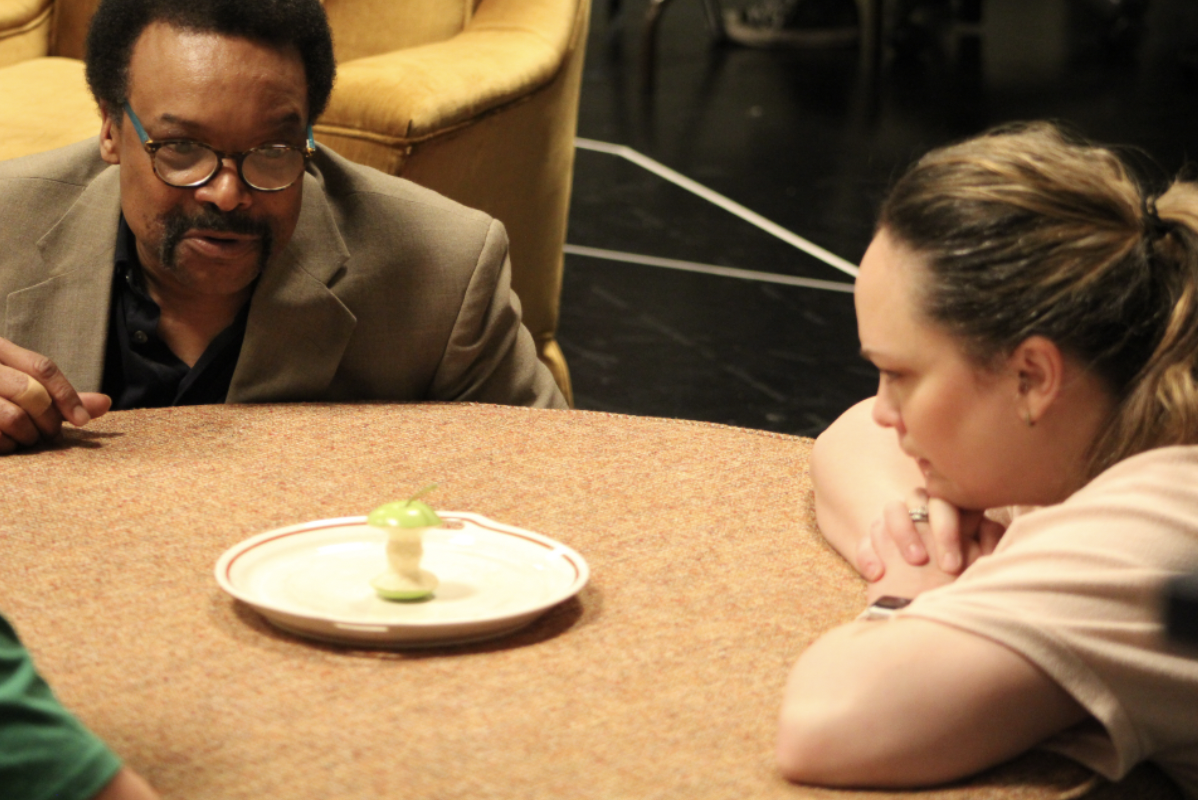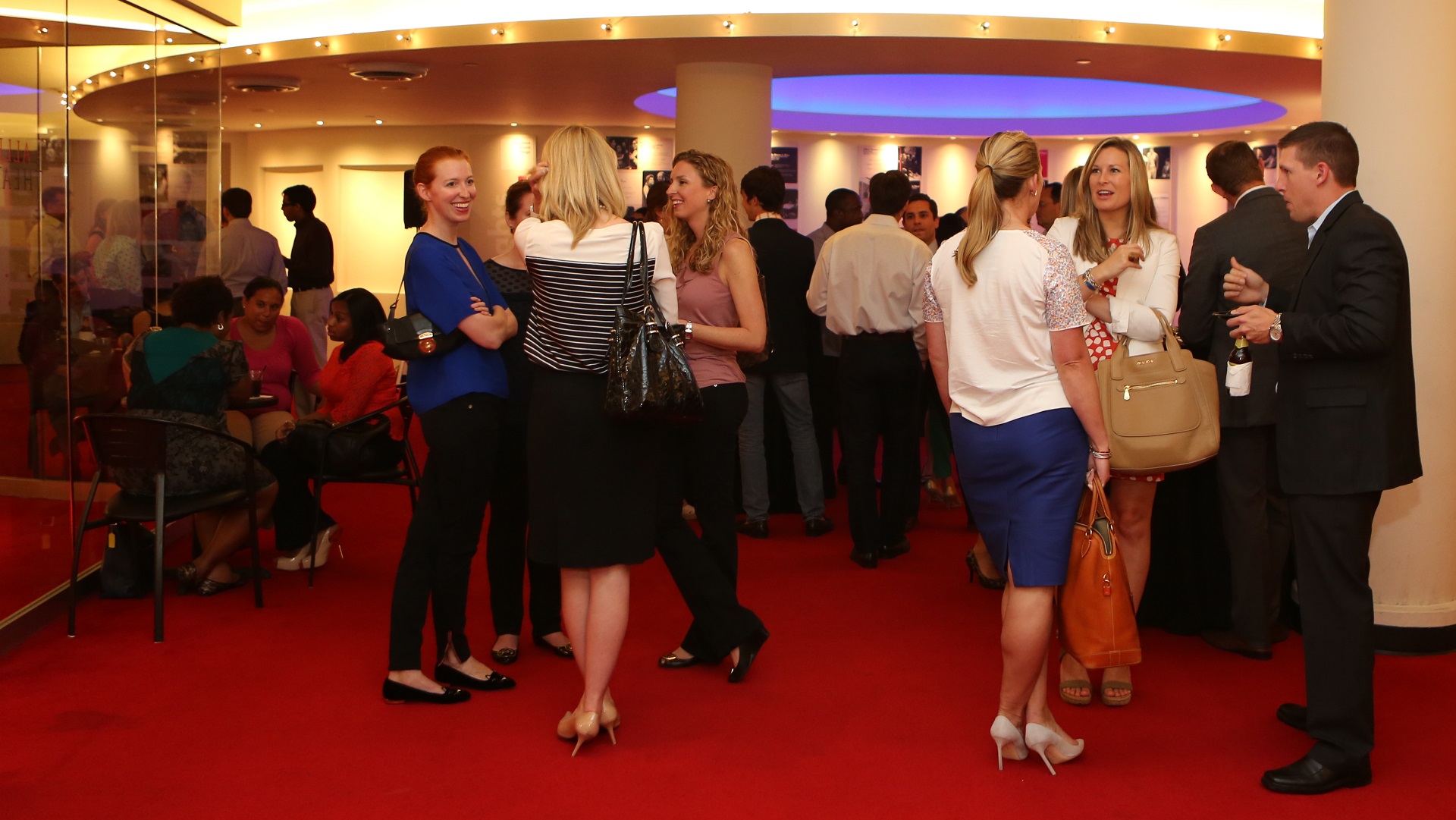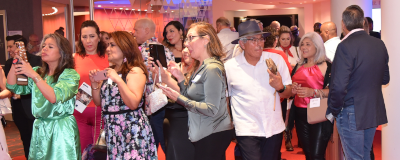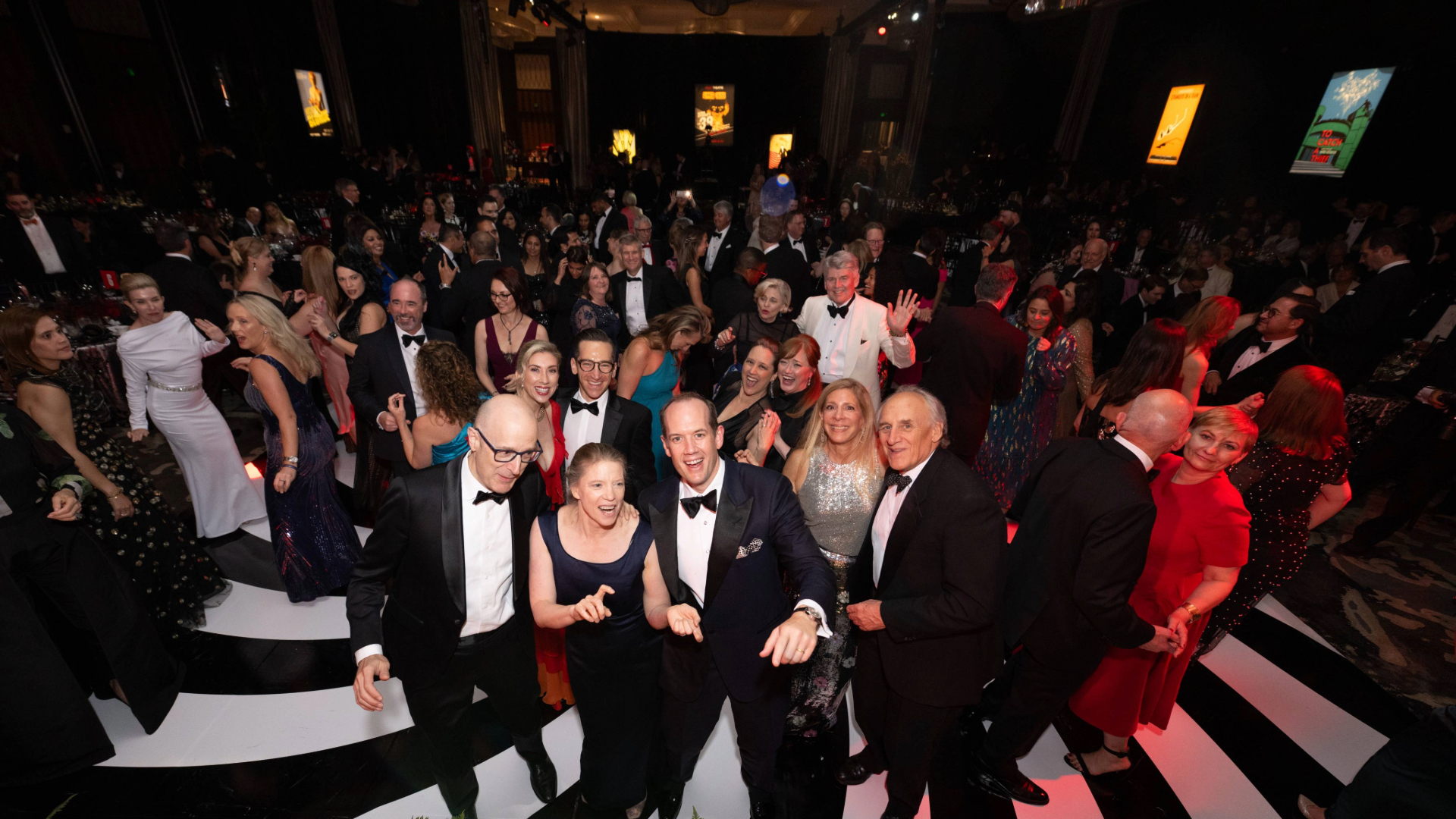Creating the Food in The Nerd
By Scott Groh, Alley Theatre Properties Director
Materials and Techniques: Can you share some insights into the specific materials and techniques the props team utilizes to create the food for The Nerd?
Most of the food being used in The Nerd is the real deal. This show takes place in the 80’s, and the food needed for the production is commonplace, like bean salad or Chex mix. Since the actors are eating a lot of food in the show, we prefer to use the real thing as opposed to a prop stand in. There are a few exceptions to this though. In one scene, the cast is served Cornish hens, but they don’t eat them. Since it would be wasteful to use real Cornish hens, we have replaced those with molded and cast replicas made from a type of expanded plastic material that we then painted. We also have a plate of spaghetti with meat sauce in this show that is never consumed. To make that we use extruded rubber, like rubber bands, to replicate the pasta and then cover that with a faux sauce made from paint mixed with sawdust and granulated cork to add texture.

Visual Authenticity: How do you ensure that the food aligns with the visual authenticity of the production?
The first step is always a discussion with the Director of the show and the Scenic Designer to determine what their needs are. We consider the social class and ethnicity of the people eating the food, the time period in which it is served, and the setting for the scene. A steak dinner might look very different depending on if it’s served from your backyard grill as opposed to a high-end restaurant. Once we’ve determined these parameters, we will research the foods to find a visual style that we are attempting to recreate. A lot of the work that goes into making food believable onstage goes towards the presentation of the food. Does the dishware match the aesthetic of the show? Most foods from the past 100 years haven’t changed much in appearance, but their packaging has changed a lot. Sometimes all a food prop needs to look great onstage is an authentic looking package for it to be presented in.

Challenges in Replication: What specific challenges do you encounter when replicating food/drink items, and how do you overcome these challenges to maintain the illusion of real food?
Challenges can vary depending on the project. Audience proximity to the prop is usually the deciding factor on what can work on stage. The closer the audience is, the more realistic our items need to be. On a large stage we might be able to use a piece of yellow felt to simulate a slice of cheese, but this wouldn’t work in one of our smaller performance spaces. For a more intimate show we might instead choose to use yellow tinted silicone that we’ve poured into cookie sheets and then cut into individual cheese slices.
Adding a sheen to food can also help sell the realism of the item. A piece of meat coated in a glossy coating will look more real than something with a matte finish etc.

Interaction with Actors: Are there considerations to creating food/drinks that actors need to interact with during performances? How do you ensure both realism and safety in these cases?
The first thing we always want to check is for allergies that the actors may have. If they can’t handle, for example, latex, then we would need to know that before building any fake food props. Anything that could stain is also a major concern when deciding how to build fake food. Soups, sauces, etc. can get very messy and we always want to make sure that our items will be easily washable in case of accidents. For example, when we make fake blood we will often use chocolate syrup mixed with dish soap and a little food coloring to create a realistic effect that is also easily cleaned.
Durability and Safety: In scenes where actors may handle fake food, how do you design and construct the props to withstand potential mishandling or accidental damage during rehearsals and performances?
This generally isn’t an issue that requires much consideration unless the food is used in a destructive manner. If we wanted to stage a food fight where actors threw food, we might choose to make those items out of a soft upholstery style foam that we paint. Sometimes we will even switch out props in the middle of a performance to trick the audience. We might see an actor cross the stage with a roast turkey which we’ve made from wax or silicone, but we would switch that prop for an alternate a moment later when they throw the turkey like a football.

Aside from that, a lot of times the easiest way to deal with wear and tear on a prop is to make an extra which we can sub into the show in case of damage to the prop. Having an extra allows us time to make any necessary repairs before the next performance.





























